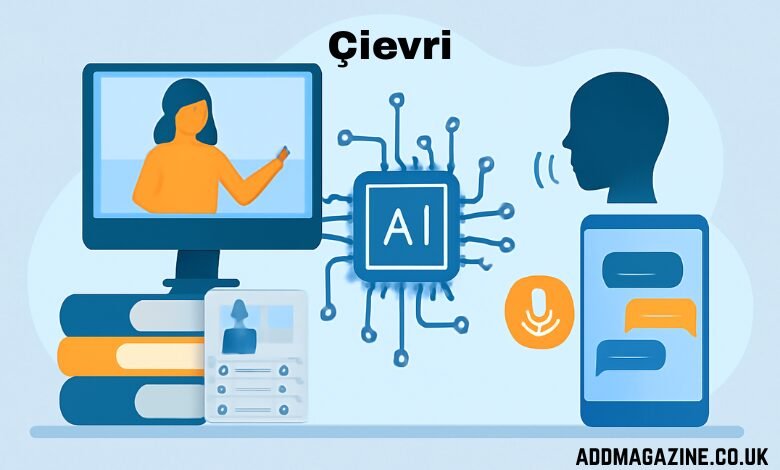In today’s rapidly evolving digital economy, the traditional route to business success—attending university, earning a degree, and securing a stable corporate job—is no longer the only path. A new generation of entrepreneurs is turning to unconventional education models that emphasize practical skills, digital literacy, and financial independence.
One of the most talked-about platforms in this space is The Real World, a global online learning and mentorship network founded by entrepreneur and former kickboxing champion Andrew Tate. Known for its focus on real-world results over academic theory, The Real World (TRW) has quickly become a hub for aspiring digital entrepreneurs seeking to build online income streams and take control of their financial futures.
What makes The Real World such a magnetic force in the digital entrepreneurship community? Let’s explore its structure, philosophy, and why it’s capturing the attention of thousands worldwide.
A New Kind of Online Education
The Real World (formerly known as Hustler’s University) is an online membership platform that teaches users practical, income-generating skills in areas such as:
- Copywriting and freelance writing
- E-commerce and dropshipping
- Cryptocurrency and finance
- Digital marketing and sales
- Artificial Intelligence tools
- Freelancing and client acquisition
For a monthly fee of about $49.99, members access curated video courses, mentorship programs, live Q&A sessions, and an active community of like-minded learners. Each topic area is called a “campus” and is taught by experts or “professors” who are said to have achieved success in their fields.
The platform’s mission is simple but bold: to replace outdated education with actionable knowledge that leads to real financial results.
The Shift Toward Skills-Based Learning
The Real World has gained traction because it taps into a broader global shift. Across industries, employers and entrepreneurs are prioritizing skills over degrees.
Traditional education systems have struggled to keep pace with the technological revolution. While universities teach theory, the digital economy rewards execution—those who can write compelling ads, build online stores, automate workflows, or create viral content.
The Real World identifies this gap and fills it with hands-on, market-driven training. Instead of studying for exams, members are guided through tasks designed to generate income, such as writing marketing emails for real clients, setting up e-commerce stores, or running small-budget ad campaigns.
This “learn-by-doing” philosophy strongly appeals to younger generations who value results over credentials and independence over employment.
Inside The Real World’s Ecosystem
The platform’s model can be broken down into four pillars — the foundation of what it calls “real-world education.”
1. Practical Skill Tracks
Each campus within TRW focuses on a specific, monetizable skill. The curriculum is regularly updated to reflect changing market conditions, such as integrating new AI tools or emerging digital trends.
Lessons are structured to be action-oriented: after learning a concept, members are expected to apply it immediately. For example, a copywriting course might challenge students to draft sales emails or landing pages, while an e-commerce track might involve testing ads and launching a product.
This active learning approach ensures members do not just passively absorb information but practice it in ways that could yield tangible financial results.
2. Expert Mentorship
Mentorship is a core selling point of The Real World. Each campus is led by a “professor” — typically an entrepreneur or experienced practitioner in the field. These mentors offer direct insights, share personal strategies, and provide feedback through community discussions or live sessions.
In an era when many online courses are static and impersonal, TRW’s mentorship model brings a human touch, bridging the gap between knowledge and implementation.
3. Global Community
A major draw of The Real World is its global community of motivated learners. The platform’s online network includes tens of thousands of members, from beginners to advanced entrepreneurs.
Within these digital spaces, users exchange advice, collaborate on projects, and share success stories. The sense of camaraderie and accountability is powerful, especially for individuals working independently.
This peer-driven environment helps sustain motivation and fosters networking opportunities that can lead to partnerships, freelance gigs, or collaborations. Many members say the community is the most valuable part of their experience.
4. Continuous Adaptation
The platform distinguishes itself through agility. Unlike traditional institutions that update curricula every few years, The Real World evolves rapidly to meet new market realities.
When AI tools began reshaping content creation and marketing, TRW quickly introduced new modules on automation, ChatGPT-based workflows, and prompt engineering. When crypto markets fluctuated, financial campuses adapted to emphasize risk management and diversification.
This constant updating ensures members learn skills that are relevant now, not outdated theories.
Why Digital Entrepreneurs Are Flocking to The Real World
Why has TRW become the go-to destination for so many aspiring digital entrepreneurs? The answer lies in several interconnected factors.
1. Accessibility and Affordability
Unlike universities that require years of commitment and high tuition, the online educational platform known as tate the real world offers a low-cost, flexible alternative. At around $50 per month, it is an entry point into online business education, accessible to learners worldwide.
This democratization of opportunity is especially appealing to young people from developing economies, where access to formal business education is limited but digital connectivity is growing fast.
2. Emphasis on Independence
The Real World promotes self-reliance, a key psychological shift for entrepreneurs. Instead of teaching members to seek employment, the platform encourages them to create value on their own.
By learning skills like copywriting, digital marketing, and e-commerce, users are empowered to generate income without depending on traditional employers. This message resonates in an era of layoffs and economic uncertainty.
3. Speed and Practicality
Time is a major factor. In TRW, learners can start implementing within days. There is no waiting for semesters, no exams, and no academic gatekeeping. For many, that immediate connection between learning and earning sets the platform apart.
Entrepreneurship thrives on speed, experimentation, and adaptability, qualities that The Real World’s structure naturally supports.
4. Community Accountability
Entrepreneurship can be isolating. A network of peers facing similar challenges provides motivation and shared learning. Within TRW’s private channels, members celebrate wins, troubleshoot failures, and keep each other accountable.
This social reinforcement is powerful. Many members stay active because of the friendships, rivalries, and collaborative spirit the community fosters.
5. The Tate Effect
Andrew Tate’s influence plays a role in TRW’s popularity. His outspoken advocacy for self-discipline, financial literacy, and independence has cultivated a strong following, especially among young men seeking empowerment and purpose.
While his public persona remains controversial, his branding of TRW as a “modern university for action-takers” has drawn immense attention, turning the platform into a movement rather than just a marketplace.
Critiques and Considerations
Of course, The Real World isn’t without criticism.
Skeptics argue that some of its content can be found freely online, and that success rates among members vary widely. Others point out the risk of over-promising results, especially for users expecting rapid wealth.
There have also been questions about the transparency of instructor credentials, data privacy concerns after minor security incidents, and the sustainability of some business models taught.
Ultimately, as with any entrepreneurial education, success depends largely on individual effort, persistence, and discernment.
A Mirror of the Modern Economy
Despite its controversies, TRW’s success highlights a larger truth: the future of education is shifting from passive consumption to active monetization.
In the new economy, people do not just want to learn; they want to earn while they learn. The Real World captures that spirit. It merges skill acquisition, mentorship, and immediate financial application, the very elements that define digital entrepreneurship in 2025.
More broadly, it reflects a generational rethinking of what education means. Degrees are giving way to portfolios, classrooms are being replaced by communities, and the idea of success is being redefined from employment to empowerment.
Conclusion: The Digital Entrepreneur’s Classroom
As technology continues to reshape the workforce, platforms like The Real World will likely play a growing role in preparing people for the opportunities and challenges of the digital age.
For ambitious learners willing to put in the work, TRW provides a space to learn, act, and grow alongside thousands of others. For critics, it raises valuable questions about the balance between education, marketing, and results.
Either way, one thing is clear: The Real World has become more than an online course. It is a global experiment in redefining education for entrepreneurs who want to build their own success stories, one skill at a time.




